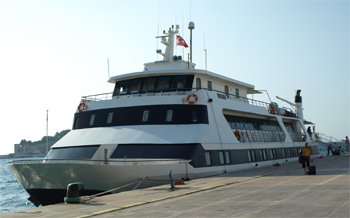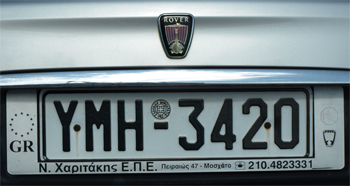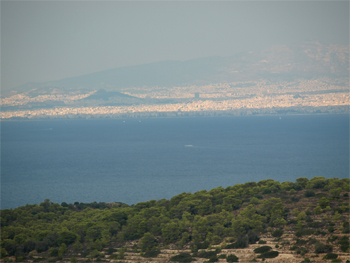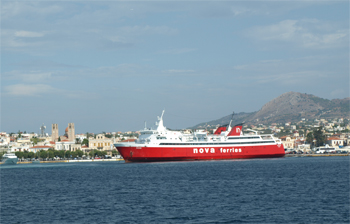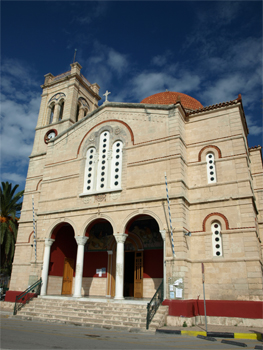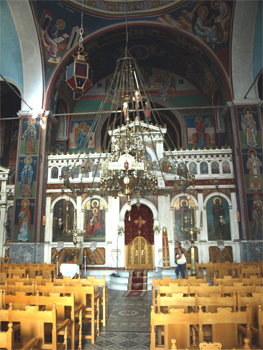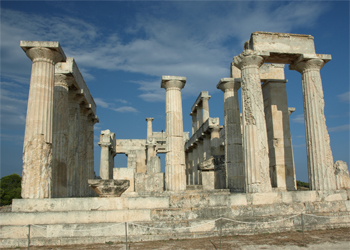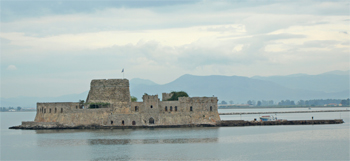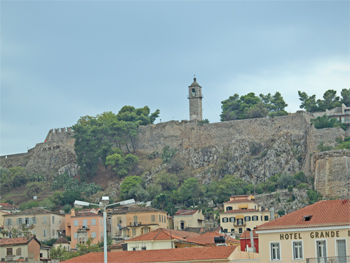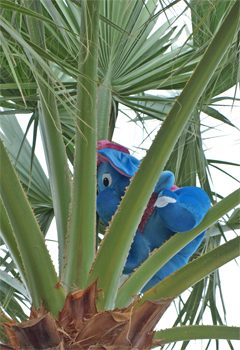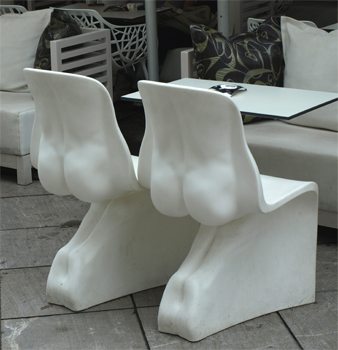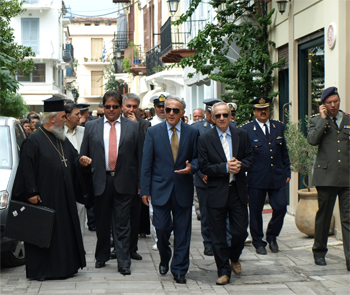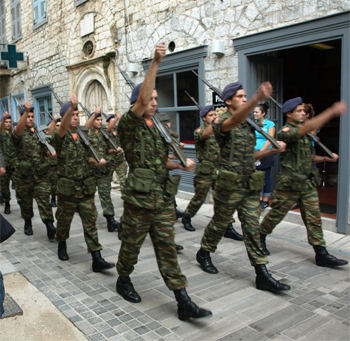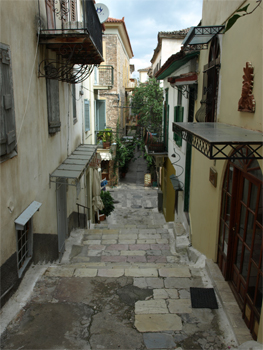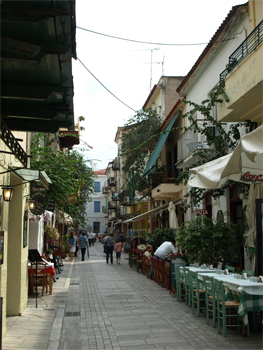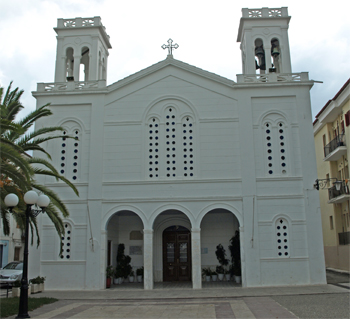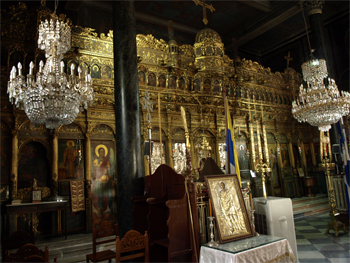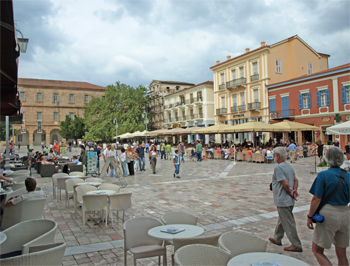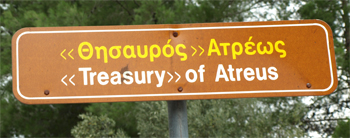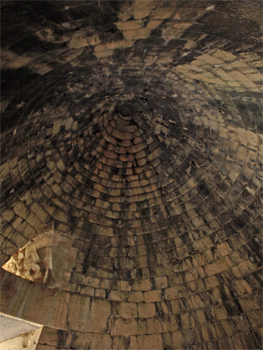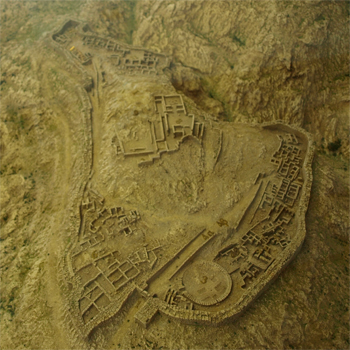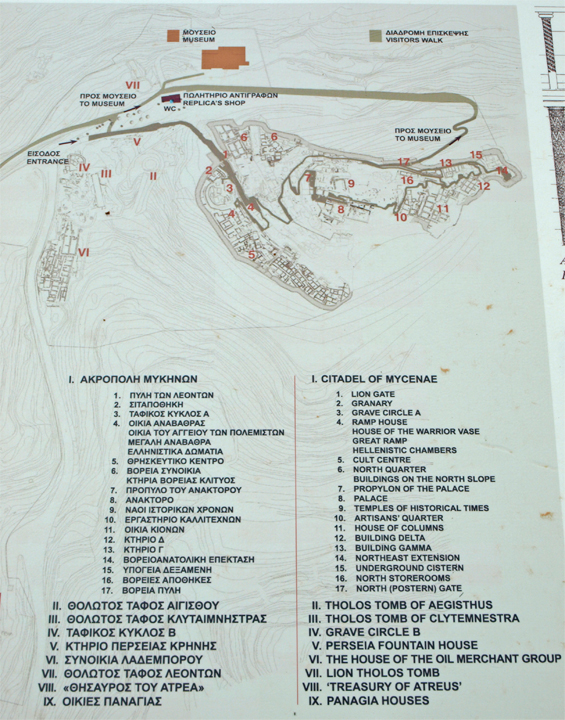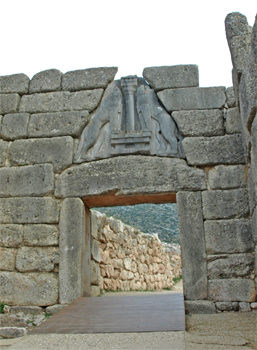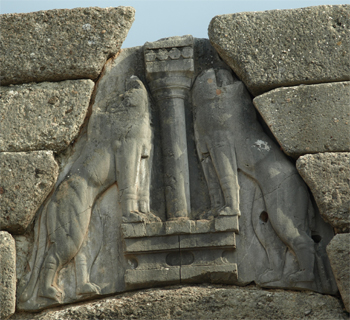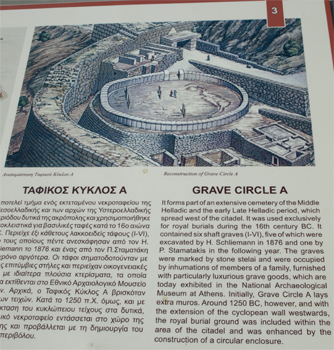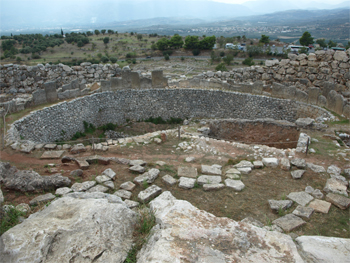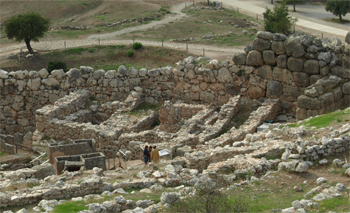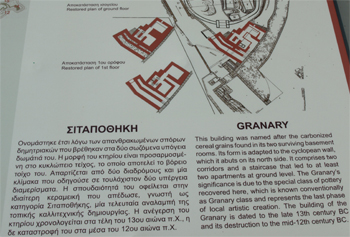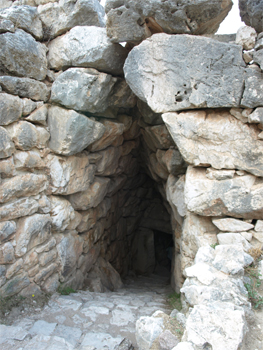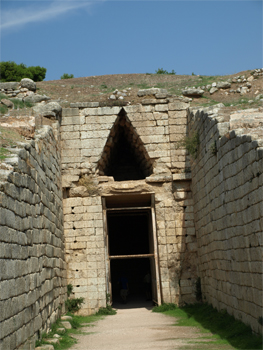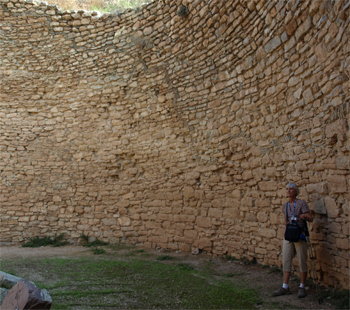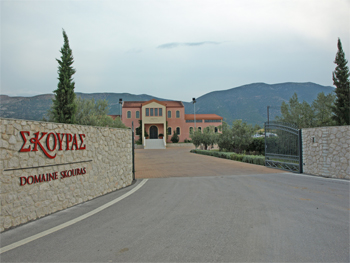Greece includes Jewels of the Mediterranean (Exploritas tour: Sept. 18-28) and Glories of Greece (Insight tour: Sept. 29 - Oct. 5)
If you wish to look for further information about any place or topic, you need to be aware that the names of many places are spelled in several different ways, depending on the language used. Putting a spelling we have used into Google will usually get you at least close to the topic, and there is a LOT of very interesting information (and more pictures) on lots of Web sites which you can access through Google or other search engines. I have in some cases provided links. You will have to use your back arrow to return here.
We boarded the Pegasus in Kusadasi and once on board we met our guide for the Greek portion of this tour, George Terezakis, and got the good news that we have a nice relatively large cabin and the bad news that because of the gale force winds (Meltemi or Etesian winds) in the Aegean, we will not be visiting any of the Greek Isles we were supposed to see.
Pegasus |
Our cabin
|
Our cabin
|
A Greek license plate |
These side-by-side pieces of maps represent the trip we should have taken, sailing from Kusadasi and going to Samos, Patmos, Amorgos, Santorini, Naxos, Mykonos, Delos, Syros, and Piraeus. We did do the land portion on the left part of the map.
|
|
The actual trip. We stopped at the island of Samos to pick up our lecturer, Kathryn Dunathan (a Floridian who married a Greek farmer) and have our passports stamped by Greek customs for entry into the EU, etc. and then hightailed it north and west to the protected coast of the mainland and the Peloponnesian peninsula. We ate dinner while docked in Samos (but were not allowed off the boat) and then sailed for 18 hours through very rough seas. I wore a Dramamine patch and took the seasick pills the ship was handing out like candy and still felt queasy. Marge even took a seasick pill! We had to stay lying down on our little beds to keep from getting hurt by trying to move around. It was quite a ride!!
|
|
Saturday - 9/19 - Aboard the Pegasus - Island of Aegina
We hit a calm patch of sea at about 7:30 AM on the leeward side of some unknown island. We both took showers and then went up to breakfast. It was a buffet with lots of fresh fruit, scrambled eggs and pancakes and not much in the way of bread. At least the coffee is good and always available along with various cookies and pretzel-like sticks.
At 10:15 Kathy gave us a lecture on Greece - geography mostly. She explained the weird weather that occurs in the Aegean. Warm winds come from Africa and cooler winds come from the north and meet over these islands. When coupled by a high pressure to the east and low pressure from the west we get gale force winds (Meltemi or etesian winds).
At 3 PM we arrived in the capital city of Aegina on the island of the same name. It is on the Saronic Gulf of the Aegean Sea and only an hour by ferry from Athens. We can see Athens from the hillside. The island was perhaps the first settlement to use coins for commerce. The coin was stamped with a turtle. We were happy to get off our little boat and walk along the quay. Most of the shops were closed for siesta time.
|
Athens from Aegina
|
Town of Aegina
|
Greek ferryboat |
We walked to the Greek Orthodox Church of Virgin Mary. It looked like the Russian churches with the elaborate iconostasis and frescoes but has a dome and seats and no onion turrets.
|
|
Local transportation |
At 4:30we boarded a motor coach and rode past the pretty St. Nektarios church and monastery on our way to the Temple (or Sanctuary) of Aphaia (or Aphaea).
|
Countryside seen from the Temple of Aphaia
|
Temple of Aphaia |
The temple is partially restored, enough to give a good idea of what it looked like originally. The columns were made of porous limestone and covered with plaster and then painted to look like marble. The columns were erected in 2 or 3 pieces and connected by iron bars and sealed with lead so the iron would not oxidize and deteriorate. It had a terra cotta roof and marble statues. It was built in 500 BC in the classic style of double rows of columns with Aphaia’s statue inside and a sacrificial altar behind her.
|
|
The drive across the island was past many terraced groves of pistachio nuts and olives. A pistachio festival is going on at the port. This is the time to harvest the pistachio nuts.
After dinner we wandered along the quay and enjoyed the festivities of the first Aegina Fistiki (pistachio nut) Festival. Booths were set up with samples of nuts and bags to be bought. The street was closed off and it was packed with people. The waterfront restaurants were fully occupied. It was a great people-watching place.
Sunday, 9/20 - Aboard the Pegasus - Nafplion (or Nauplion)
We docked at Nafplion before breakfast and stayed on our boat for a lecture on Byzantine, Minoan, and Mycenaean cultures. I could not follow her explanations. I got the idea that people have lived in this area of the Peloponnese Peninsula since 8,000 BC. The history of Greece is so tied up with mythology that it is difficult to sift the real world from the myths.
Fortress on Bourtzi Island in the Naufplion harbor |
Nafplion harbor
|
Nafplion with the Palamidi Castle on the hill above
|
Acronafplia Castle above the town |
We took a walking tour around the town of Nafplion. It is a quaint old town with Greek Orthodox churches and narrow streets and courtyards.
You see the darndest things in palm trees
|
Comment unnecessary |
Procession for a big shot |
Led by the military
|
Street scene in Nafplion
|
Street scene in Nafplion |
Agios Constantinos church - formerly a mosque
|
Church interior |
Pointing the way to the square
|
Syntagma Square in Nafplion |
At the end of the walk Marge roamed around taking pictures and Gale went into the local museum. Archeological excavations around here have found evidence of obsidian and flint tools and beads from 8,000 BC. The exhibits were arranged in chronological order up to the 5th century AD. They display carbonized figs, pots and tools and needles from 3,000 BC; bone tools (6800 to 3200 BC); gold leaf, bronze and gold beads and flint arrowheads (1500 BC); figurines (1300 BC); boars tusk helmets and bronze armor, glass bottles (1 AD); iron reinforcements for sandals that look like crampons and a large victory vase from the Panathenian Games of 530 BC. There were interesting pieces of faience, which are finely glazed ceramic beads that were found in Egypt as early as 4000 BC. It is amazing what all was buried with a dead person!
After lunch we boarded a bus and went to visit the ruins at Mycenae. The man-made hills outside the walls of the ancient city contained beehive shaped tombs. Many relics were discovered in the tombs in the area. One of the tombs, (supposedly that of Agamemnon) was opened and robbed of its relics and then used as a treasury (Treasury of Atreus) for olive oil and grains.
|
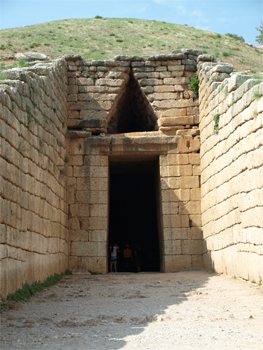
Doorway
|
Interior of tomb - top of "beehive"
|
The ancient city of Mycenae is located directly across the road from the Treasury of Atreus
Citadel of Mycenae
|
We entered the city of Mycenae through the Lion’s Gate. Above the lintel are two carved lionesses, perhaps the oldest sculpture in Europe.
|
|
Lions Gate
|
Lions Gate |
|
Grave Circle A excavation |
Granary excavation |
|
We followed the path and looked at the remains of the hearth room, palace, houses, and the secret underground cistern, which supplied water to those sheltered within the fortified walls when under enemy siege.
|
Entrance to the cistern - we didn't go down
|
Tholos Tomb of Clytomnestra
|
Gale inside for perspective |
Our next stop was at the Skouras Winery. We were shown the machines that bottle their wine and the casks of aging wines. We then sampled two white and two red wines that they make and were given a quick lesson on clarity, smell, and taste. The wines were all very nice and not bitter.
|
|
When we got back to the Pegasus we had another lecture, this time about pagan Greek religion. I guess we will need some of that information when we get to Athens. I am beginning to believe “its all Greek to me” is the best way to describe these lectures!
| Return to Top | Return to Greece Itinerary | Return to Trips Page | Return to Dreamcatcher Home Page |
